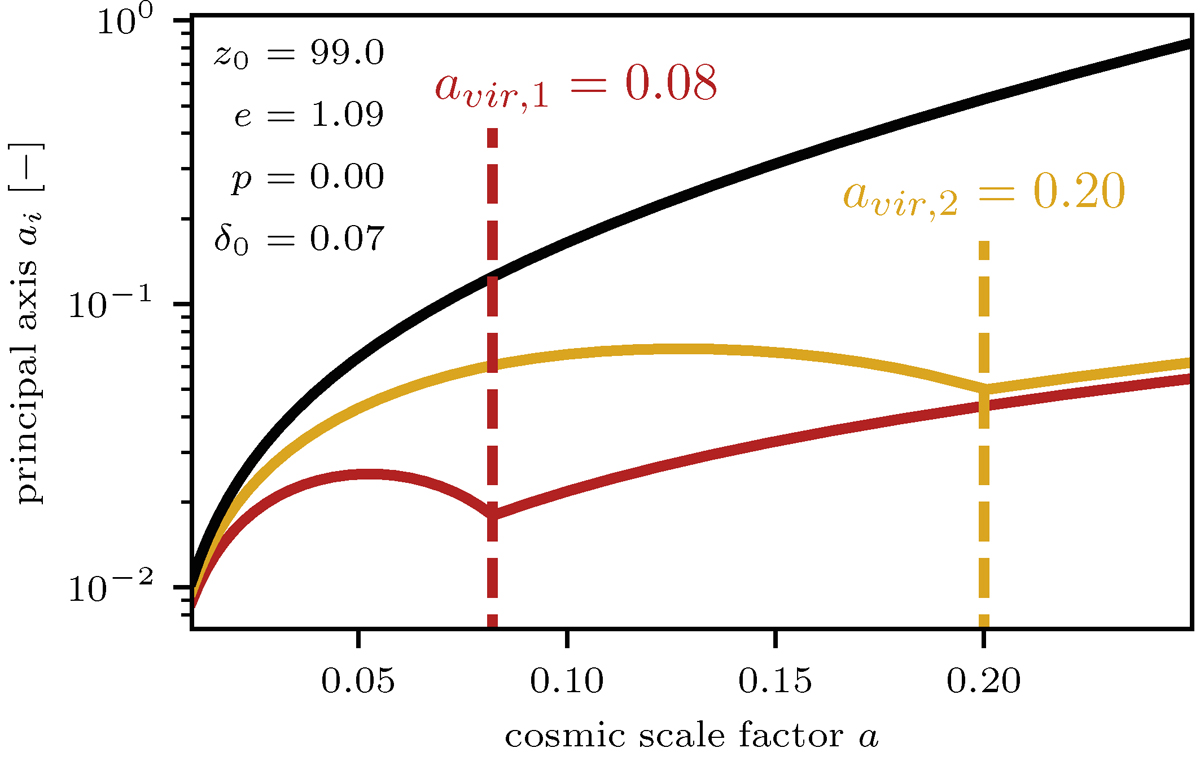Fig. 9.

Download original image
Example of ellipsoidal collapse in a ΛCDM background for a homogeneous ellipsoid with mass M = 5 × 109 M⊙ h−1. The equation of motion, Eq. (C.1), preserves the homogeneity of the initial conditions and it is thus sufficient to observe the evolution of the axis scale factors ai(a). After an initial expansion, each axis turns around, contracts and freezes out according to the steady-state tensor virial theorem, Eq. (C.6). The subsequent evolution is fixed to ensure a constant comoving axis size Ri = ai(a)Rini/a. We identify a filament as an object with two frozen axes – in the depicted scenario realized at z = 4. The residual triaxiality, i.e., the mismatch between the yellow and red lines at large a, is ignored for the construction of our filament population.
Current usage metrics show cumulative count of Article Views (full-text article views including HTML views, PDF and ePub downloads, according to the available data) and Abstracts Views on Vision4Press platform.
Data correspond to usage on the plateform after 2015. The current usage metrics is available 48-96 hours after online publication and is updated daily on week days.
Initial download of the metrics may take a while.


